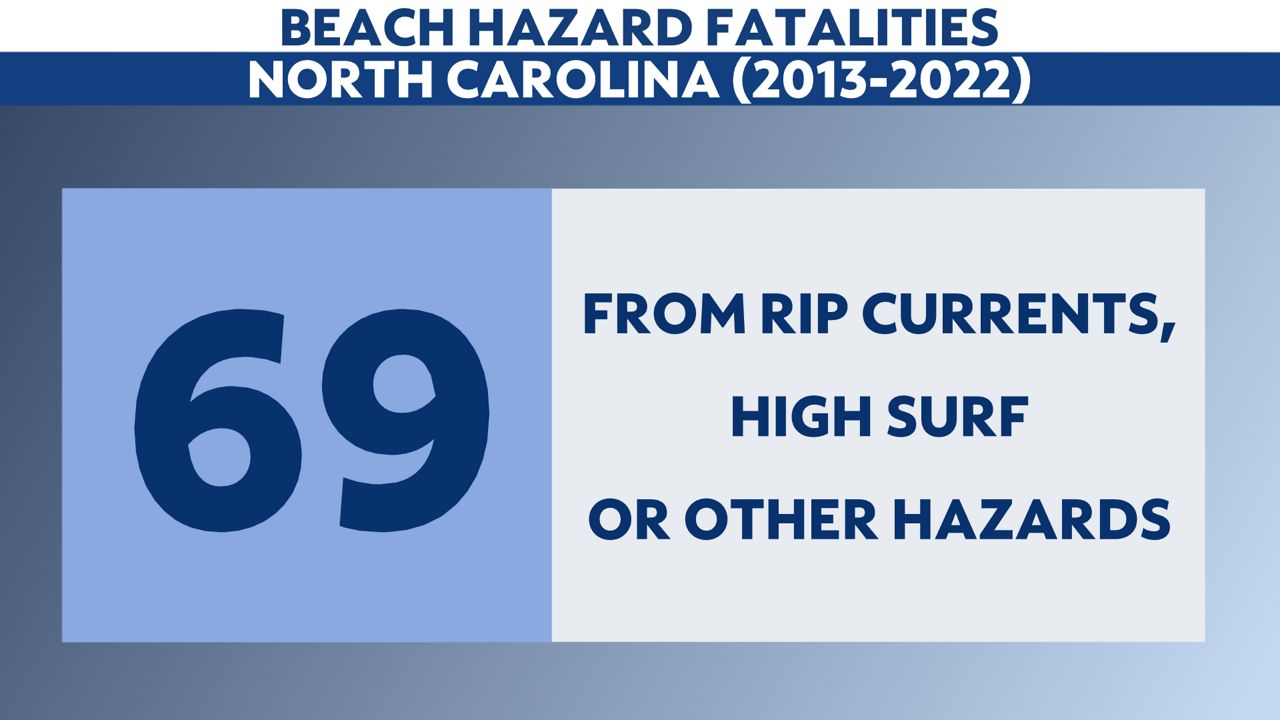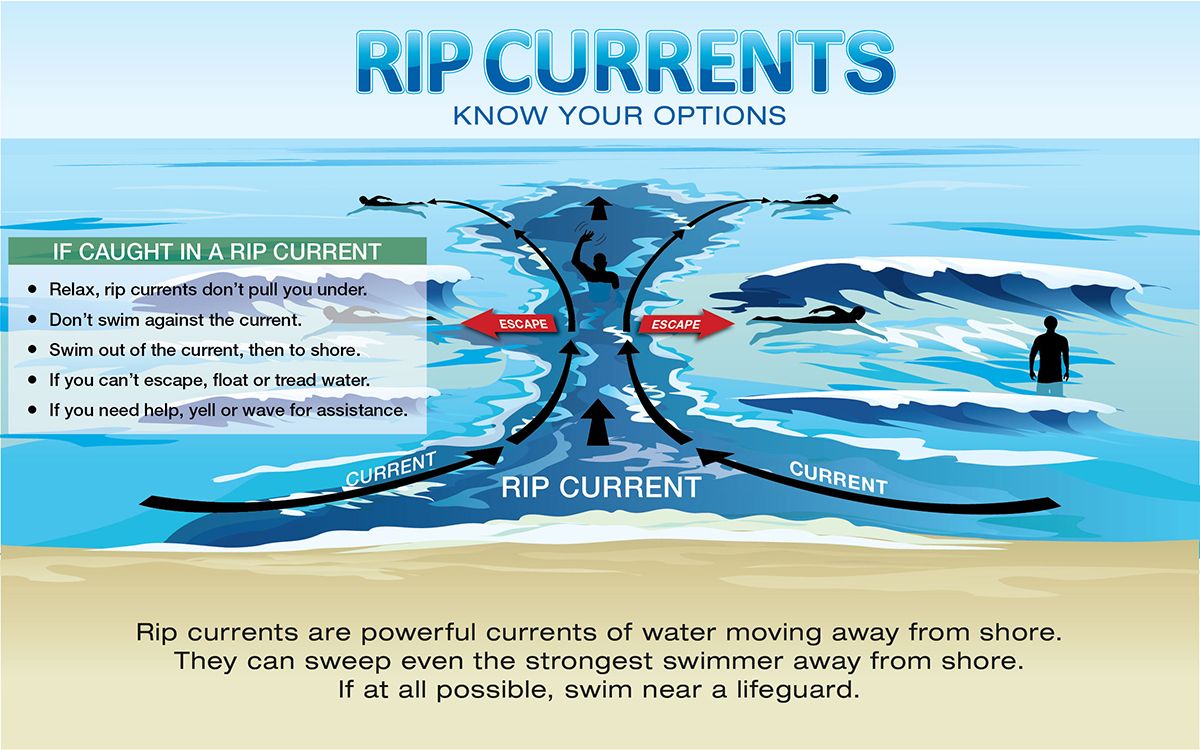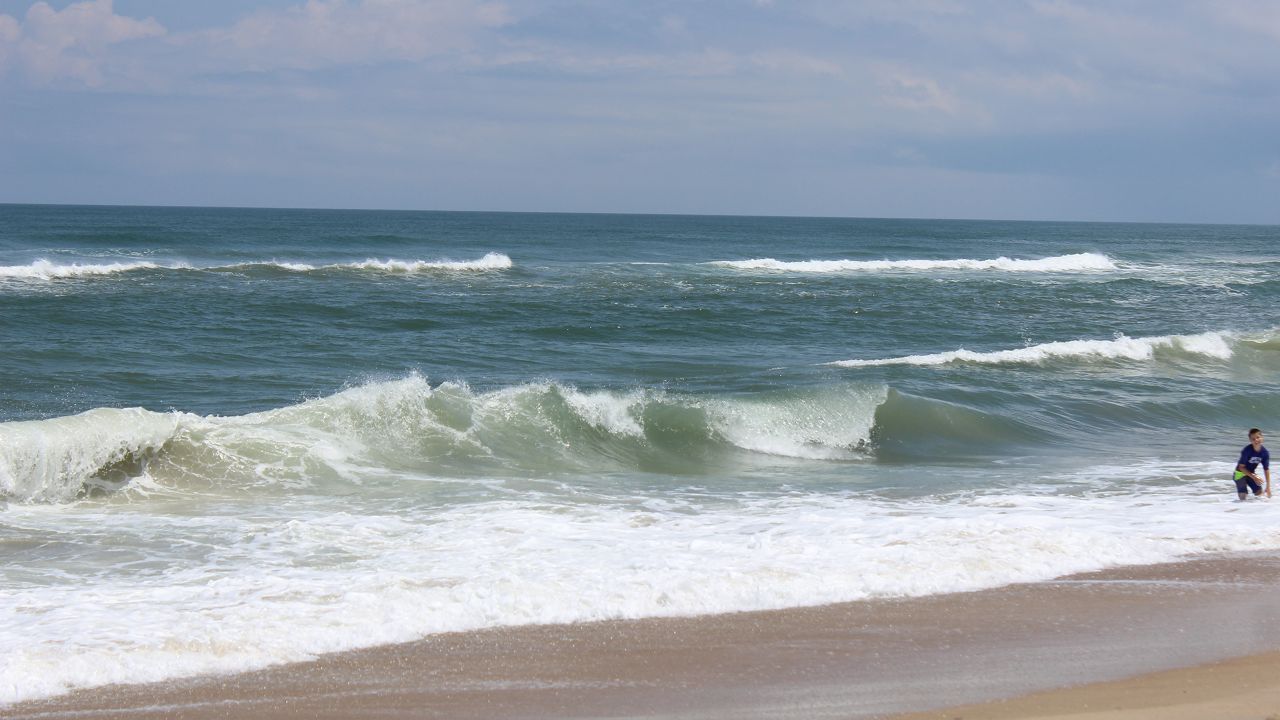The weather is looking pretty nice for a visit to one of our beautiful beaches along the North Carolina into the weekend, but there will be a danger lurking in the water.
An area of low pressure closer to the northern Bahamas Thursday is already creating a high risk for rip currents along most of the coast.

As the disturbance moves closer to Florida and Georgia over the next couple of days, the threat for rip currents will likely continue into the weekend along the Carolina coast.
Rip currents are powerful channels of water than can pull even experienced swimmers away from shore.
Over the last decade, rip currents and other beach hazards have been more deadly than floods, lightning and tornadoes combined.

The best way to survive a rip current is to either let it carry you out to sea and swim at an angle to the shore, or to swim parallel to the shore while in the rip current to get back to the sand.

Remember to never swim alone and do not float in water that you cannot swim in.
Also, swim at a beach with a lifeguard nearby if possible. The United States Lifesaving Association (USLA) has calculated that the chance for a drowning at a beach protected by USLA lifeguards to be at 1 in 18 million (0.0000055%).
That means you’re 27 times mores likely to win an Olympic medal than to drown at a beach with a lifeguard.
Even with lifeguards though, it's best to stay out of the water when you see red flags flying, indicating the high danger for rip currents.
Our team of meteorologists dives deep into the science of weather and breaks down timely weather data and information. To view more weather and climate stories, check out our weather blogs section.









